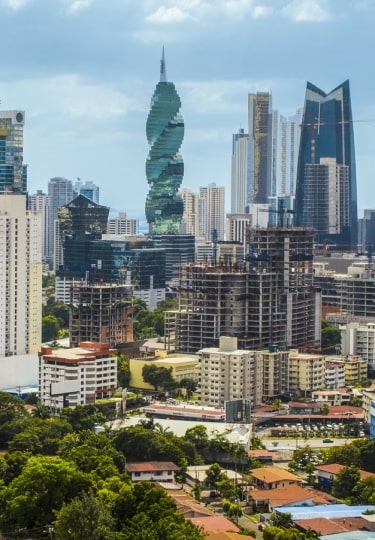This Central American destination is known the world over for its namesake canal—and, indeed, the 50-mile-long, century-old Panama Canal is an engineering marvel to behold. But there’s much more to Panama than just this monumental point of transit. In fact, for a small country that measures roughly about the size of South Carolina, there’s an incredible amount of fun things to do in Panama.
For one, Panama is home to one of the largest rainforests in the Americas. With more than 60% of the nation forested, there are plenty of national parks and designated reserves for the public to access. Step inside one of these pristine treasure troves of biodiversity, where lush vegetation, screeching howler monkeys, lazy sloths, exotic birds, and more await.
Beach lovers will be happy to hear about the plethora of virgin islands and Panama’s lengthy mainland coastline. Stretching for hundreds of miles on either side, the many beaches fronting the turquoise Caribbean and powerful Pacific count among Panama’s tourist attractions.
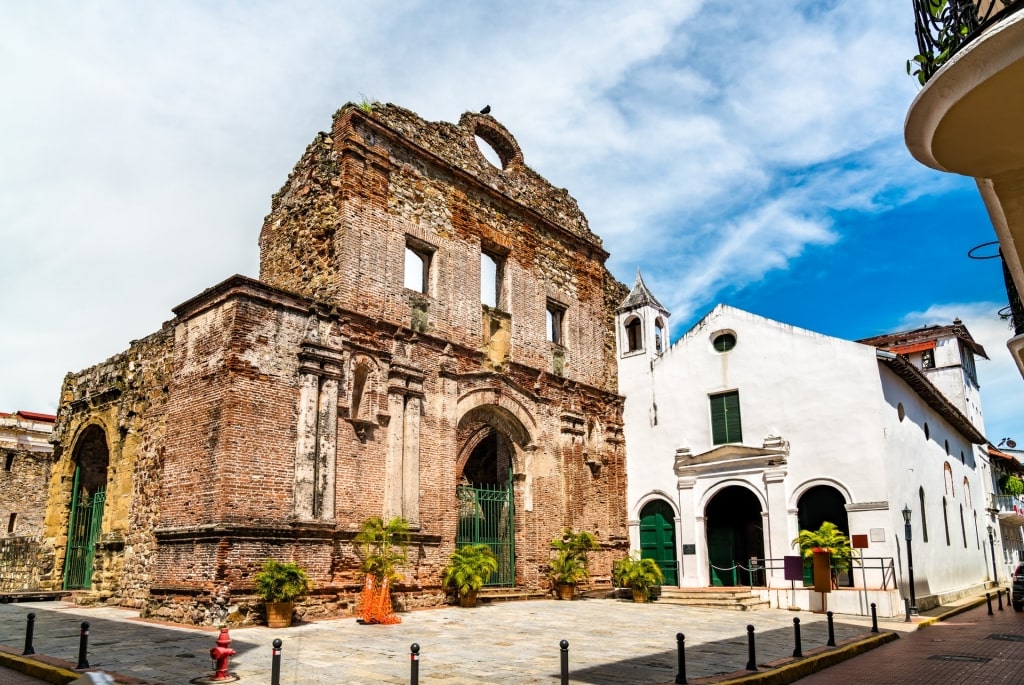
Casco Viejo
There’s also dynamic and cosmopolitan Panama City to explore, with its mix of modern gleaming skyscrapers and 17th-century colonial architecture. The tropical capital offers up an enticing spread of attractions and eateries, not to mention that it is the prime perch for day trips further afield (for instance, access to the pristine rainforest is just minutes away).
Panama also remains intimately aligned with the rich traditions of its indigenous cultures, with seven distinct indigenous groups actively maintaining their customs. Several of these groups welcome visitors to their communities, offering a chance for true cultural immersion.
Plus, the country’s tropical weather affords heavenly year-round temperatures, where climate rarely dips below the mid-70s.
It’s no wonder Panama is quickly rising as one of Latin America’s most coveted destinations for vacationers. Here are eight incredible things to do in Panama on your next visit.
1: Be Wowed by the Panama Canal
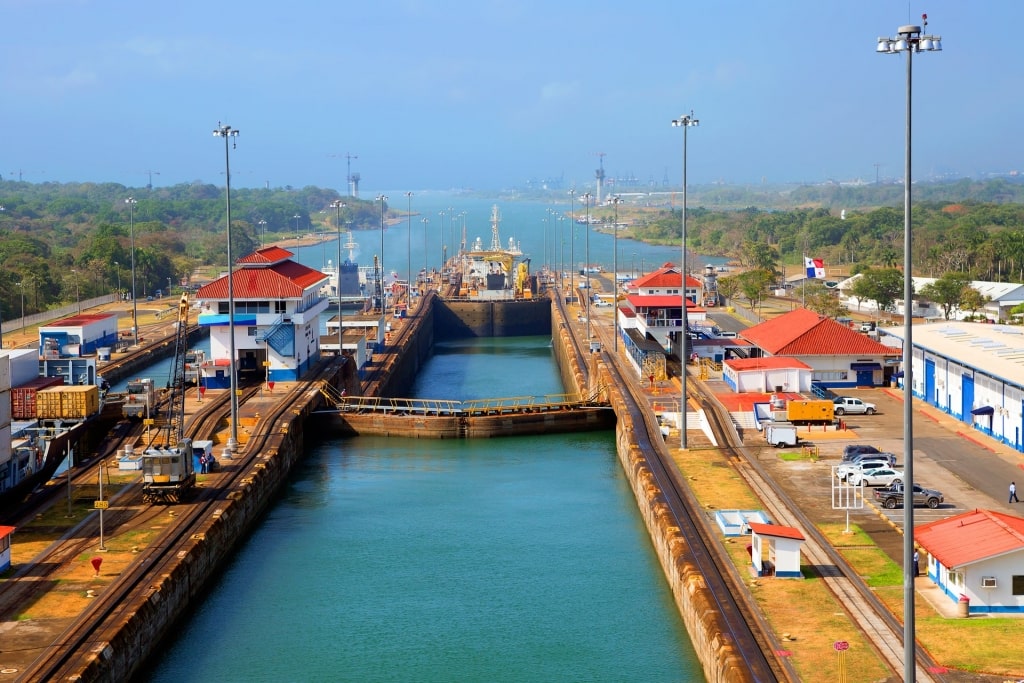
Panama Canal
One of the top things to do in Panama is getting a closer peek at the country’s most popular landmark, the Panama Canal. Rest assured, this feat of engineering remains no less of a sight to behold today as it was when it was first constructed across the narrow Isthmus of Panama back in 1914.
The lock-type canal serves to connect the Atlantic and Pacific oceans, on a 50-mile long stretch that runs between the city of Colón on the Atlantic side and the Gulf of Panama, near Panama City, on the Pacific side.
One of the world’s biggest transit shortcuts and most important artificial waterways (along with the Suez Canal), the Panama Canal continues to play a huge role in the maritime world. Its construction has allowed ships the chance to dramatically shorten their journeys. For instance, a ship sailing between the east and west coasts of the U.S. that utilizes the canal can effectively shorten its journey by about 8,000 nautical miles (as compared to going around South America’s tip at Cape Horn).
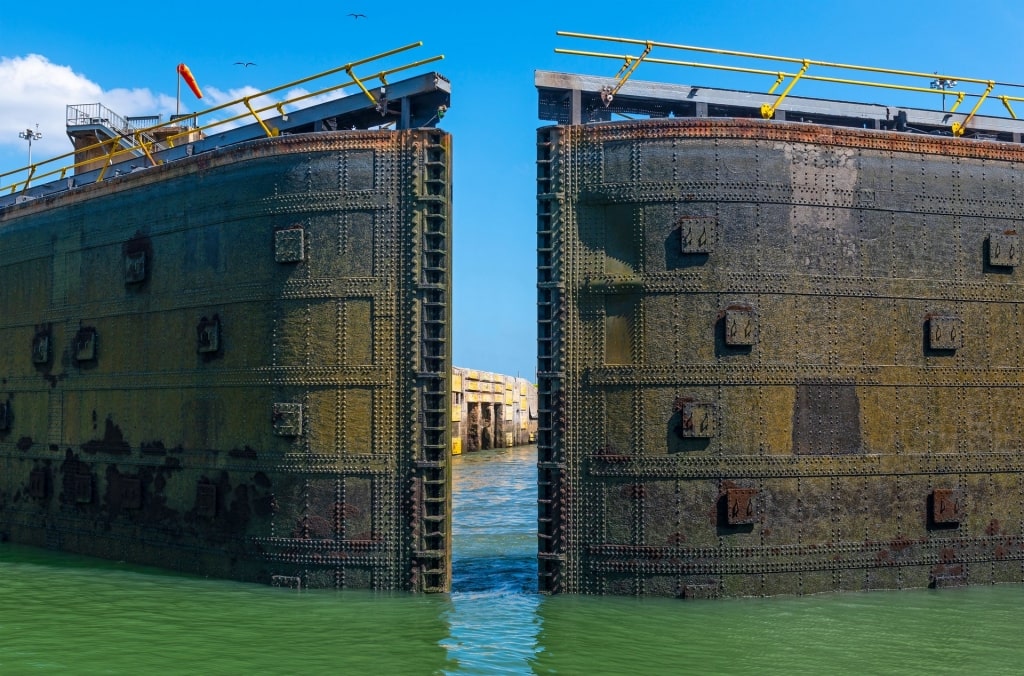
Miraflores Locks
The canal’s functionality is dependent upon an elaborate lock system, which serves to lift ships up 85 feet above sea level, to the elevation of the canal. You can more fully contemplate the intricacy of that system at the Gatún Locks or Miraflores Locks observation areas. There, visitors get a front-view seat of the action and can take in the spectacle of the hulking ships traversing the waterway.
When visiting the Panama Canal, you can also opt to board a local ferry to get a closer look at navigating the lock system right from the water. On these partial transits, a cruising highlight is sailing through the Culebra Cut, a trough through the local mountains that’s considered to be one of the canal’s most challenging structural components.
2: Get Out on the Water at Gatun Lake
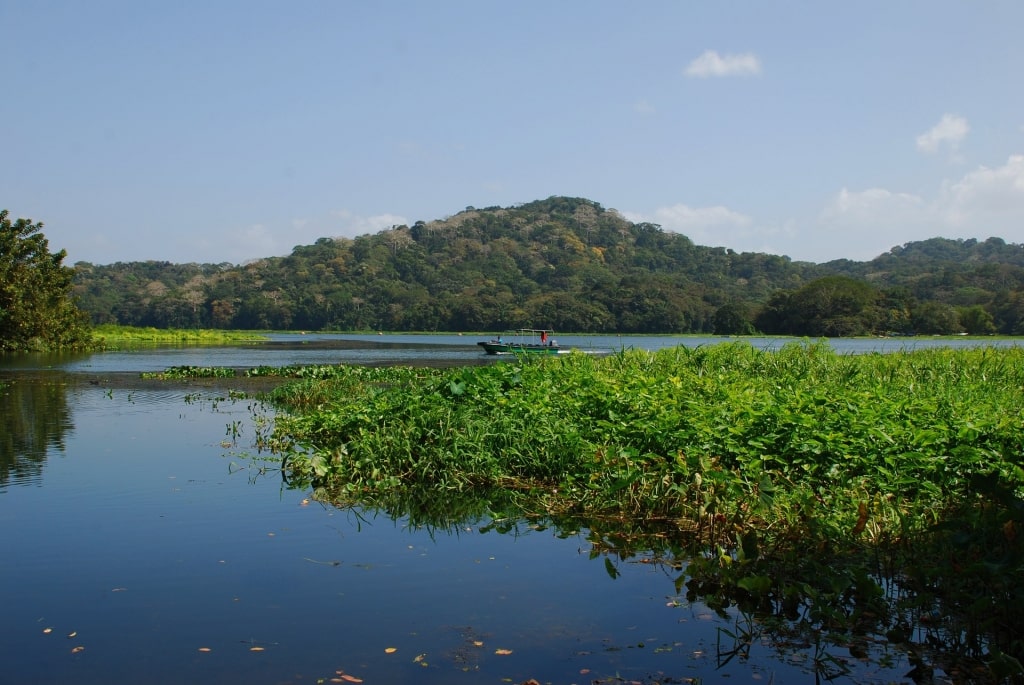
Gatun Lake
The massive 166-square-mile Gatun Lake is an artificial lake that is also part of the Panama Canal system. It was formed by the damming of the Chagres River, and was once the largest manmade lake in the world. The lake’s water levels are an integral part of the Panama Canal’s overall structure, serving as part of the canal’s transit route, while providing a sufficient reservoir of water to permit proper operation of the canal’s lock system.
Gatun Lake is a pretty spectacular place to simply take pause. Part of a rich tropical ecological zone, the lake also features ecotourism opportunities, many of which center on boating and fishing.
One of the best things to do in Panama is to sign up for a guided kayak adventure at Gatun Lake, where you can get up close and personal with this section of the canal’s unique rainforest ecosystem.
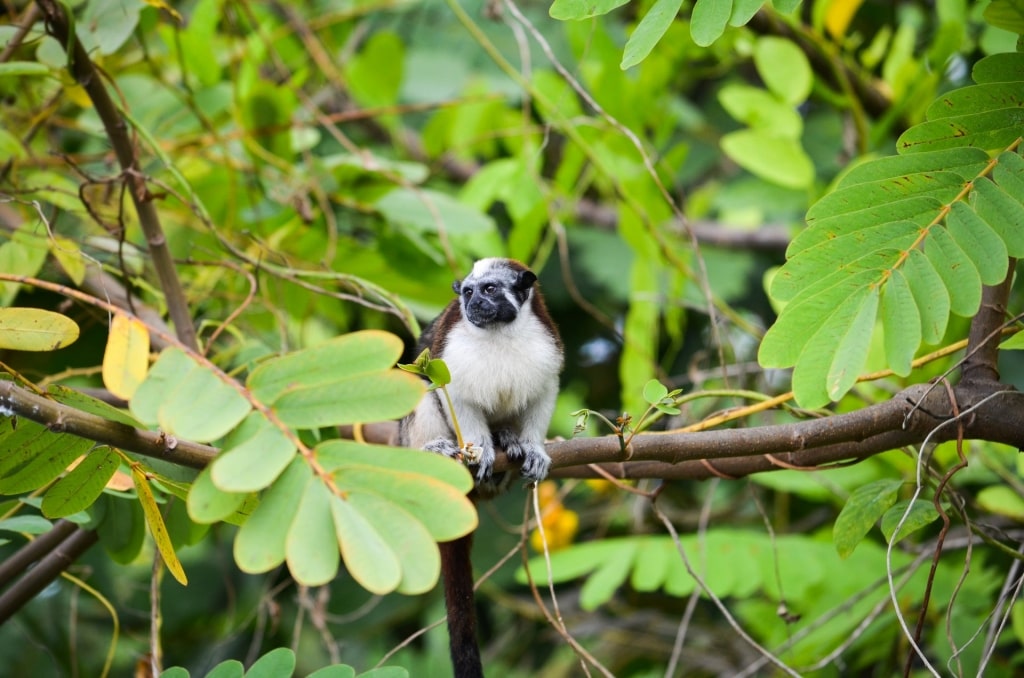
Monkey
Or, if you’re not feeling up to powering your own boat, hop aboard a catamaran or high-speed boat tour instead, where a naturalist guide will help point out the jungle-covered islands and the lake ecosystem’s various inhabitants.
Keep your eyes peeled for varied wildlife, like tropical birds and butterflies, capuchin and howler monkeys, crocodiles and caimans—and if you’re really lucky, maybe even a sighting of three-toed sloths.
3: Connect with Nature at Soberanía National Park
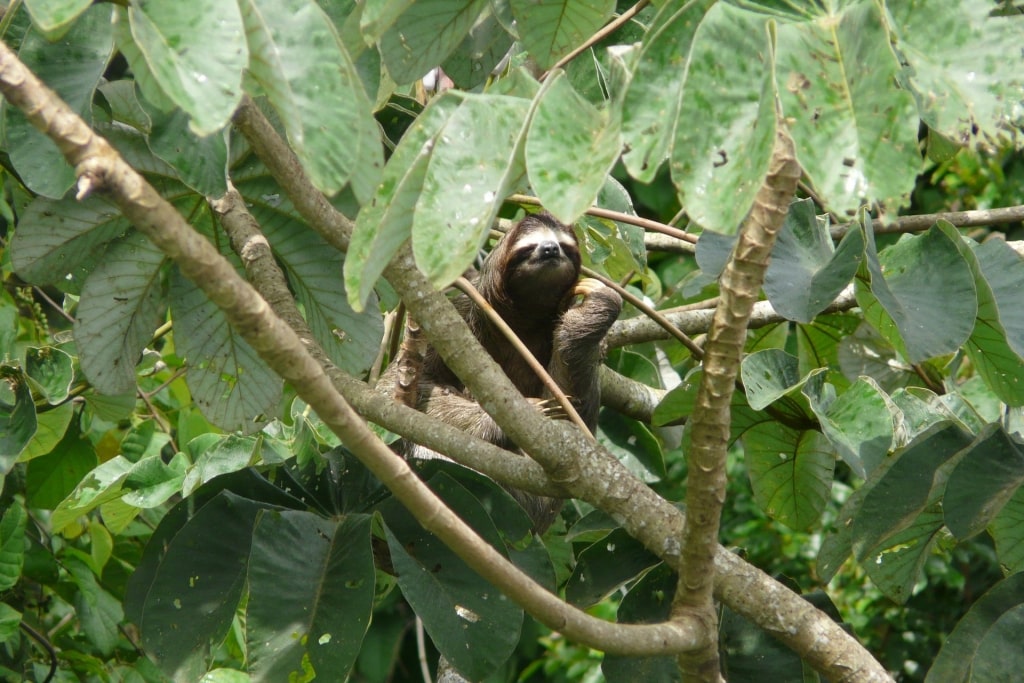
Soberanía National Park
Soberanía National Park is a wilderness wonderland teeming with biodiversity and one of the most accessible national parks from Panama City. The 55,000-acre tropical oasis sits near the banks of the Panama Canal (in fact, it’s protected in part to provide watershed for the canal), and can be reached via a 40-minute ride from Panama City.
Inside this leading Panama tourist attraction, visitors can take in endless landscapes of a protected rainforest that’s traversed by the Chagres River, while keeping their eyes open for various wildlife sightings.
Once there, you’ll see that hiking trails abound. Try the Pipeline Road, known for its exemplary migratory bird-watching, with more than 500 recorded bird species, including toucans, woodpeckers, hawks, and more. Or try the Plantation Road, which zips by local vegetation like cocoa, rubber, and coffee trees to waterfall-viewing points.
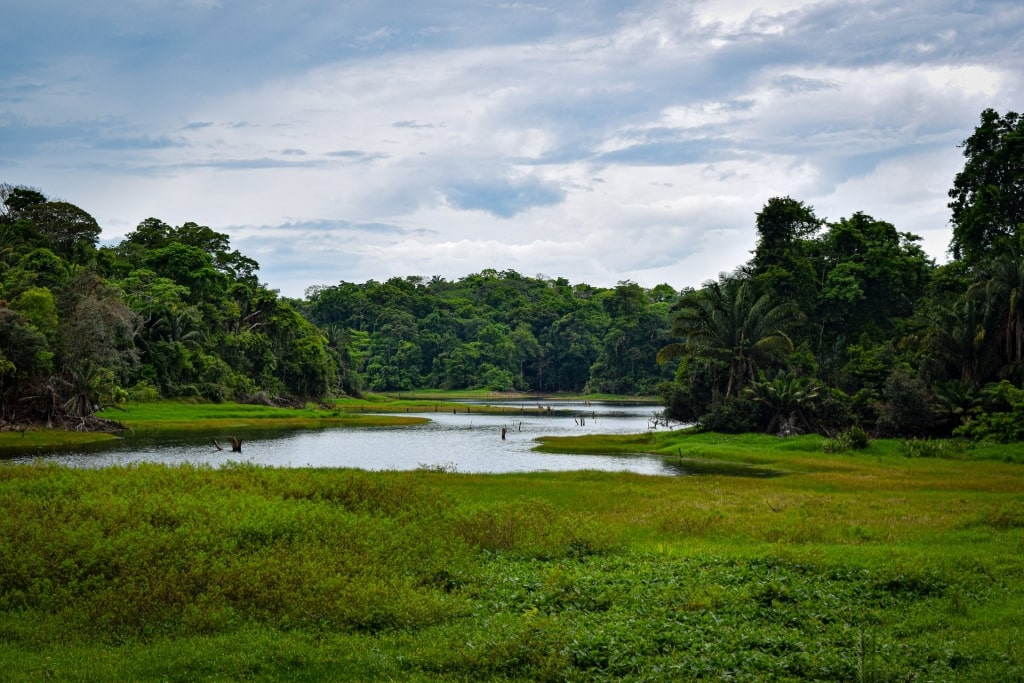
El Charco Trail
History buffs, meanwhile, might appreciate a trek on the Camino de Cruce, a path which links two coasts that was once used by Spanish colonists for transporting gold and other locally sourced treasures. Families, meanwhile, can flock to the easy El Charco Trail, with its natural pools and picnic areas.
The national park is also home to the Panama Rainforest Discovery Center, an interpretive center with various exhibits on the local environment and ecotourism. Plus, it offers a 105-foot-high observation tower (accessible via a spiral staircase), overlooking the rainforest’s canopy.
All the while, keep an eye out for a variety of wildlife, like tiny Geoffroy’s tamarins, howler monkeys, white-faced capuchins, three-toed sloths, agoutis, and more.
4: Step Back in Time in Panama City’s Casco Viejo
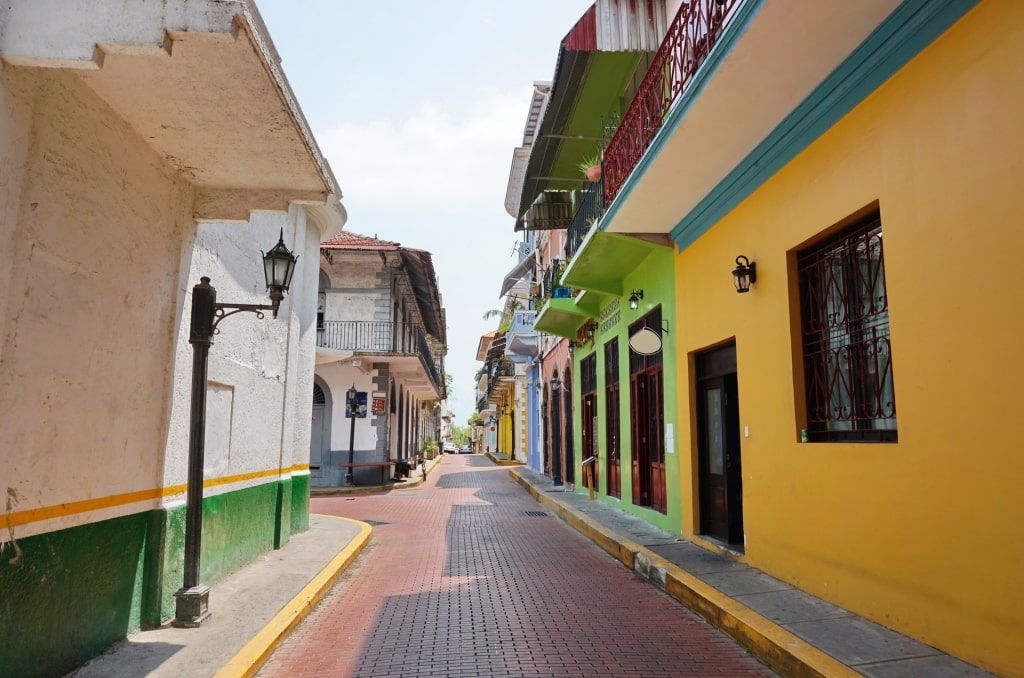
Casco Viejo
Feel like you’ve been transported to another era while ambling about Panama City’s atmospheric and UNESCO-protected Casco Viejo “old quarter” (also known as the Casco Antiguo). Follow pedestrian-friendly brick-paved streets and admire the district’s historic 17th-century Spanish colonial architecture, montage of centuries-old churches, hip wine bars, inviting coffee shops, eclectic museums, vibrant plazas, and an assortment of craft shops and boutiques.
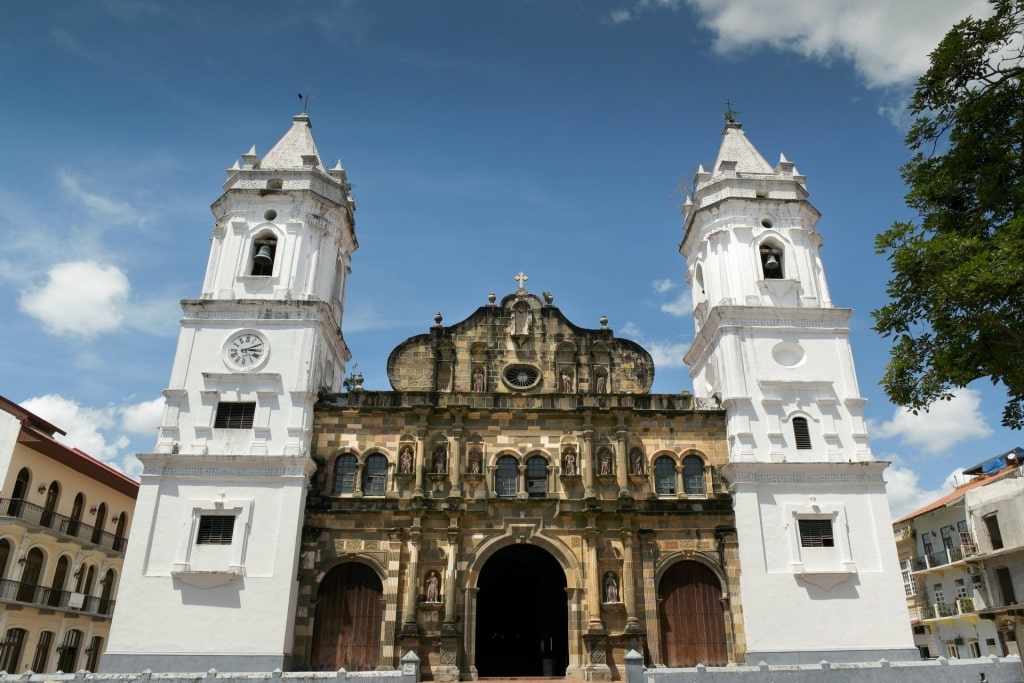
Plaza Mayor, Casco Viejo
Pause at picturesque plazas, like the French-influenced Plaza de Francia (a good spot to enjoy raspados, a fruit-flavored snow cone), or the Plaza Mayor, the area’s main square, to take in the street life and surrounding structures. You’re sure to marvel at the pastel-hued building facades, in varying states of restoration and disrepair, with their ornate facades and wrought-iron balconies.
But there’s more than just history here. The Casco Viejo is a lively hub for dining and nightlife, so follow your nose to the wafting smell of grilled seafood, or your ears to the Latin tunes emanating across the quarter. Bonus: There are several stunning rooftop bars where you can pair a cocktail with sunset views over the modern city skyline and nearby bay.
5: Encounter the Emberá Indigenous Community
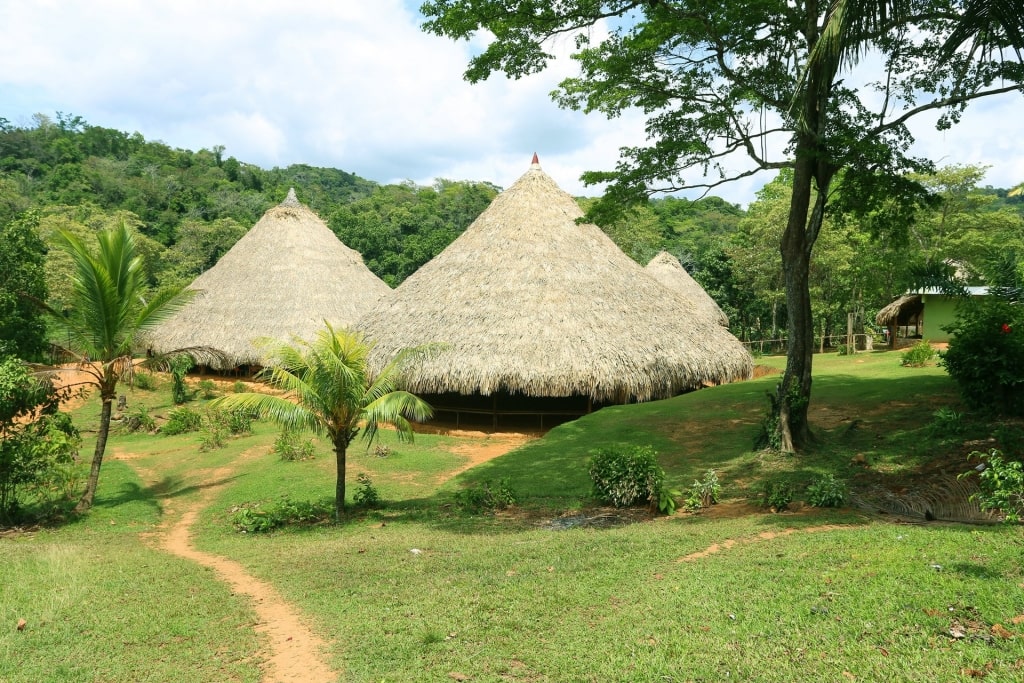
Emberá Village
Panamanian culture is inherently tied to its indigenous communities. The Emberá people, which make up a population of more than 30,000 in Panama, were traditionally rainforest dwellers, who lived in settlements along the Chagres River. While many members of the community have since moved on in recent decades to embrace city life elsewhere in Panama, a sizeable population of Emberá maintain their rainforest residencies.
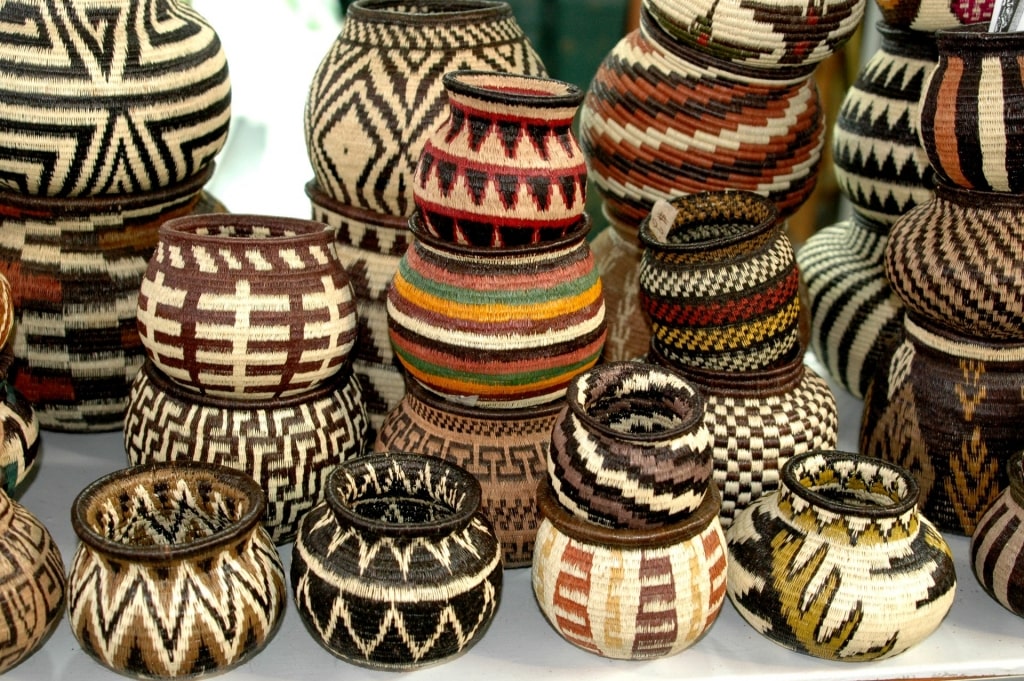
Emberá hand-woven baskets
The Emberá typically welcome their visitors via the Chagres River, by way of a traditional wooden dug-out canoe that’s typical to the ones that the Emberá have historically used.
Learn more about the Emberá, including their traditional Panamanian food (like fish and plantains), language, ceremonial dance and music, crafts (they’re especially known for intricate basket-making and carved statues, which often depict animal imagery), and more, on a guided tour of their riverfront villages.
6: Get Immersed in Panama’s Natural History at the BioMuseo
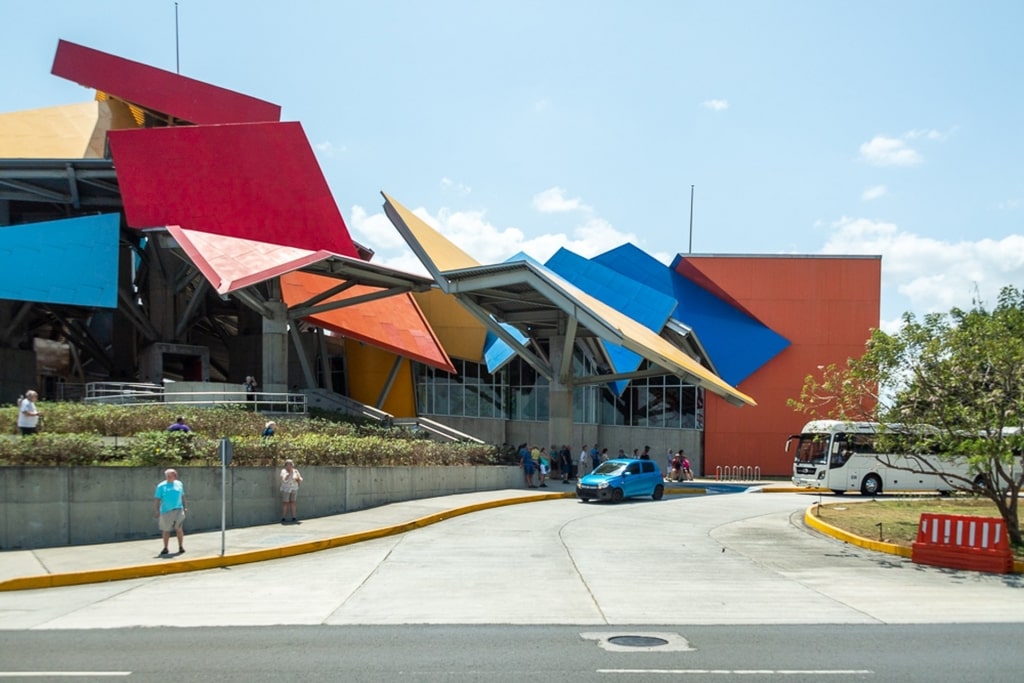
BioMuseo Photo by Craig Stanfill on Flickr, licensed under CC BY-SA 2.0
Legendary architect Frank Gehry’s first and only project in Latin America is Panama City’s BioMuseo, a whimsical waterfront building situated on the Amador Causeway. The wildly and colorfully-designed building is dedicated to Panama’s natural history and biodiversity, and admiring its asymmetric, geometric panels and vibrant hues is one of the top things to do in Panama.
The museum was developed with the aid of scientists from the Smithsonian Institution and the University of Panama, and serves as a temple to all things Panama, across eight interactive galleries.
You’ll discover the geological history of Panama, and learn about the very formation of the isthmus itself. Exhibits also illustrate the country’s commitment to environmental protection, and hone in on Panamanian biodiversity—don’t miss the tri-level “The Panamarama,” a projection of the country’s ecosystem.
Other exhibits highlight the human history of the area, while aquarium displays depict surrounding ocean life from Panama’s Pacific and Caribbean coasts. The museum also houses rotating exhibits, and several outdoor gardens, too.
7: Visit the Smithsonian-Backed Punta Culebra Nature Center
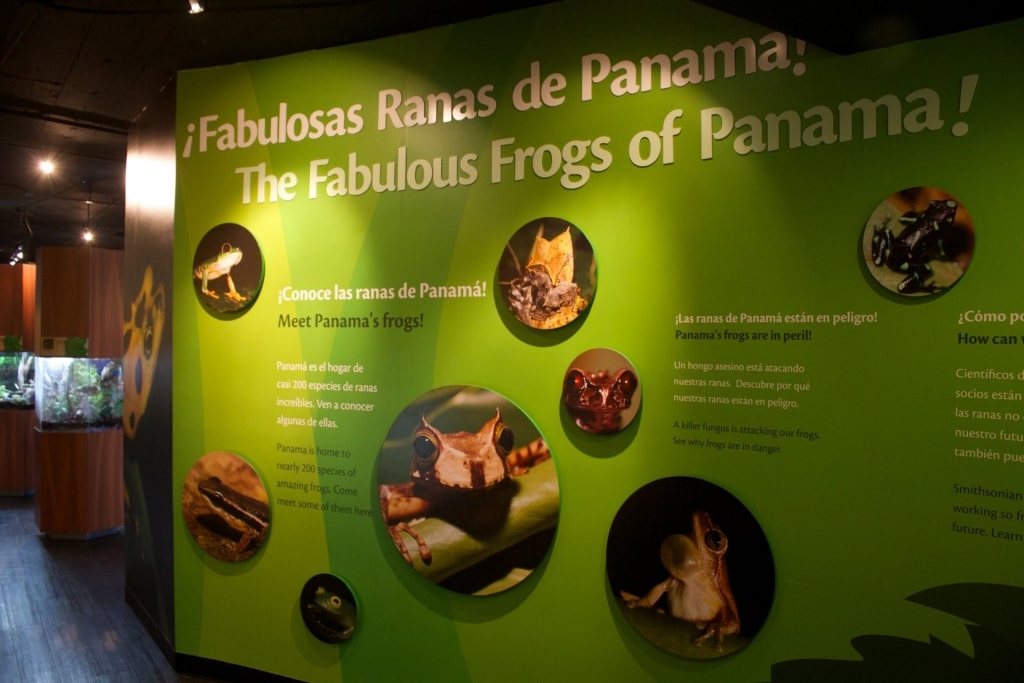
Punta Culebra Nature Center Photo by brian.gratwicke on Flickr, licensed under CC BY 2.0
Perched at the Pacific approach to the Panama Canal, near the end of the Amador Causeway, the Punta Culebra Nature Center (backed by the Smithsonian Tropical Research Institute) offers visitors a chance to explore the natural world of the Panamanian coast through the lens of science and conservation.
Step inside the kid-friendly, open-air museum, one of the top things to do in Panama, due to its interactive exhibitions aimed at exploring Panama’s unique and fragile coastal and marine habitats. Attractions include a tropical frog exhibit devoted to showcasing Panama’s nearly 200 species of frog, a marine invertebrate touch pool, as well as aquariums dedicated to sea turtles, fish, corals, and anemones that were sourced from the surrounding seas and waterways.
The center also offers nature trails through the surrounding tropical dry forest, where animals like sloths, iguanas, and armadillos are known to roam.
8: Get Your Shopping Fix at the Multiplaza Pacific Mall
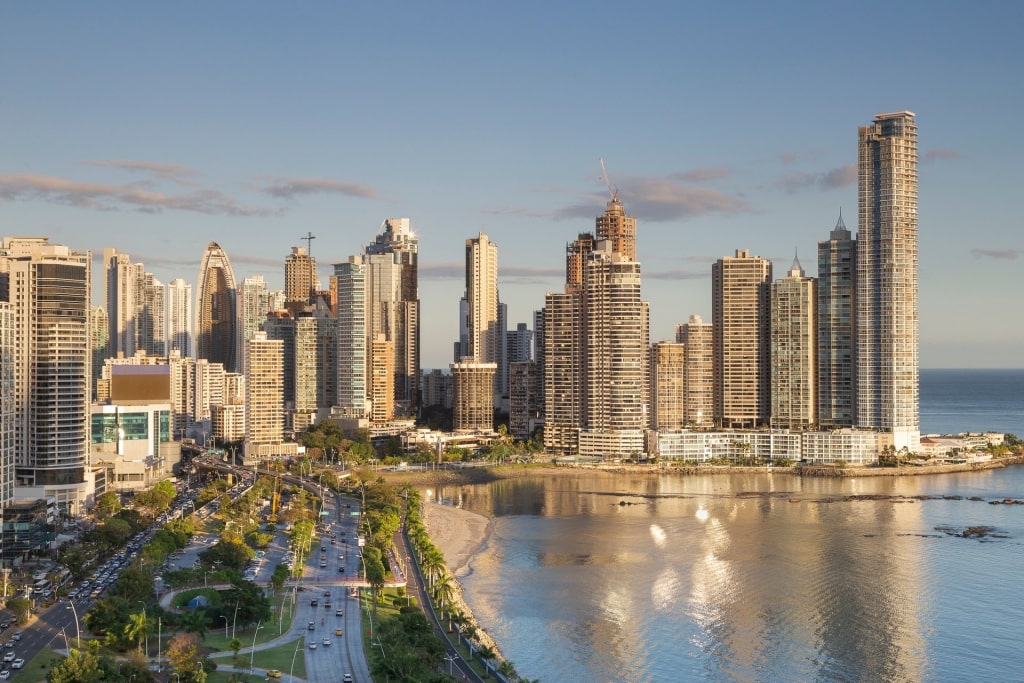
Downtown Panama City
It’s little wonder that the international port of Panama City, with its front-perch access to the canal, is a world-class shopping destination.
Some of the highest quality goods can be found at the city’s modern Multiplaza Pacific Mall, which is considered to be one of the top malls in all of Central America. More than 300 shops, ranging from Adidas to Zara (and plenty in between), spill over three levels, and there you are sure to find many other international brands for clothes, jewelry, housewares, and more.
Just keep in mind that with the level of luxury found here (think: Chanel, Cartier, and Tiffany), comes the pricing to match.
Bonus: When it comes time to refuel, there’s a food court and several restaurants on site.
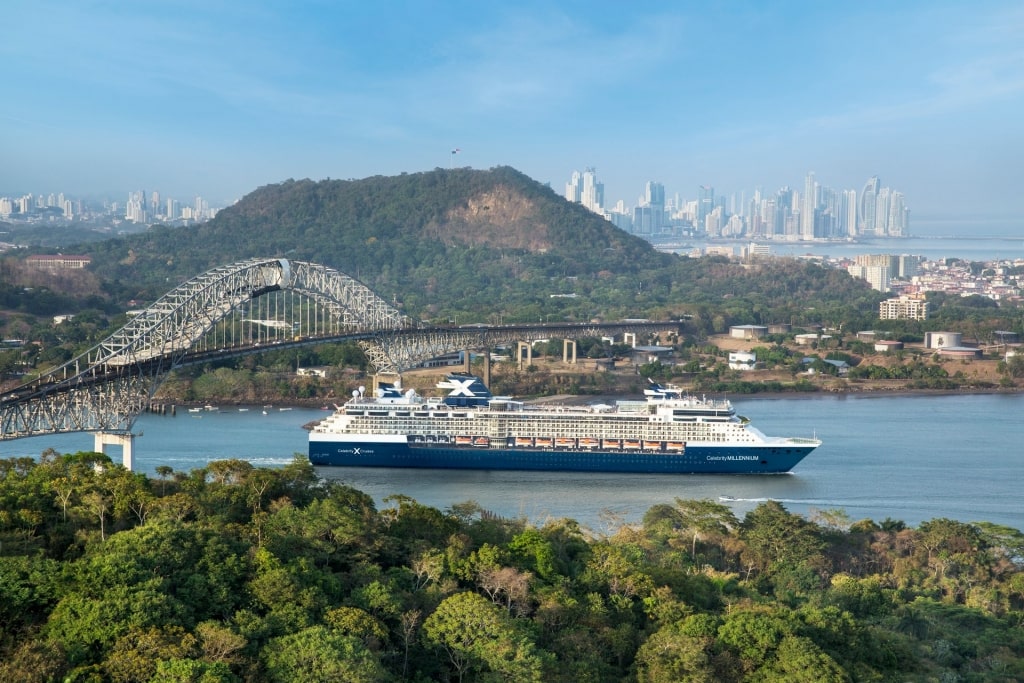
Celebrity Millennium
One of the very best ways to take in Panama’s tourist attractions is on an unforgettable cruise that crosses the Panama Canal. Celebrity Cruises offers Panama-inclusive sailings that are sure to offer memories that will last a lifetime. Browse itineraries on our website and book your Celebrity Cruises vacation today.
